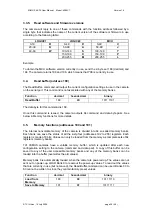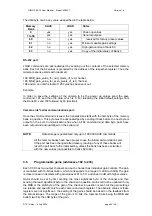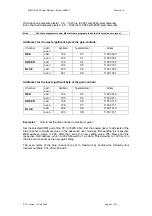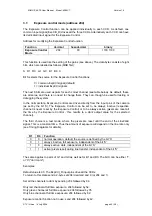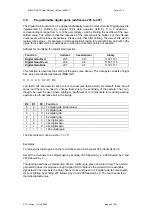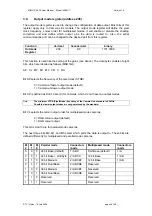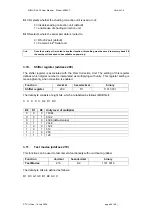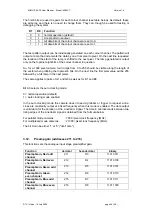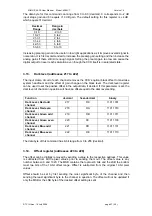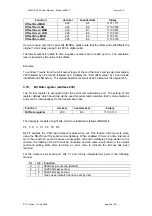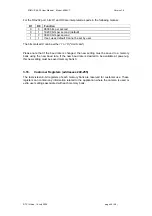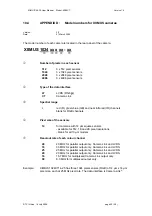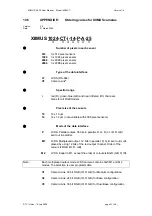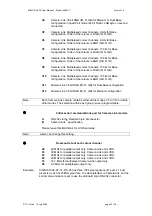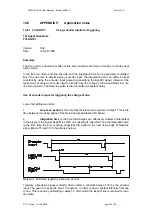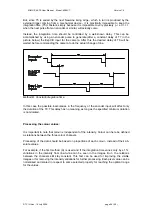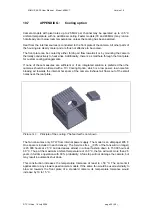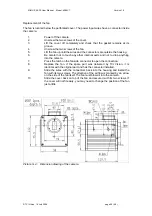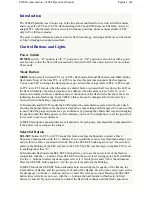
XIIMUS 4K CL User Manual. Model: 4096CT. Version 1.4
10.6
APPENDIX F: Application notes
10.6.1 TVI-AN701:
Using encoder Inputs for triggering
TVI Application Note
TVI-AN701
Version: 0.02
Date:
14 April 1999
Summary:
The two common operation modes of line scan cameras are free-run mode or encoder input
driven mode.
In the free run mode both the line rate and the integration time can be precisely controlled.
But if the line rate is determined by encoder input, the integration time can better be kept
constant by using the encoder input pulse for generating the ExpCtrl signal, instead of the
typical way of using an encoder input to directly drive the change of line input (NewLine) of a
line scan camera. The NewLine pulse is then sent after a constant delay.
Use of encoder inputs for triggering the change of line:
Let us first define two terms:
1.
Line scan period
is the time that the pixels are
exposured
to light. This is the
time between two rising edges of the NewLine signal (labelled T3 below).
2.
Integration time
is the time that charges are effectively collected (integrated)
in the pixels. If the signal ExpCtrl is LOW, no collecting is possible. Thus the integration time
is the time from the end of (rising edge) ExpCtrl signal to the next rising edge of NewLine
signal (labels T5 and T8 in the pictures below).
Method A: Estimated length for Exposure Control.
Typically, a NewLine signal is directly driven (after a constant delay of T2) by the encoder
input. The goal is to keep the time T5 constant - in order to have constant intensity from line
to line. This is done by estimating a delay T4, after which the ExpCtrl line is returned to inac-
tive state.
© TVI Vision, 14 July 2006 page 53 ( 56 )

